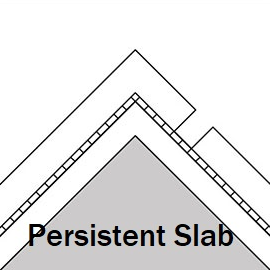Gudauri
Natural avalanches are possible, human-triggered avalanches are likely. Small avalanches in many areas, or large avalanches in specific areas, or very large avalanches in isolated areas.
The lastest snowfall got moved first by S then N winds. While windslabs are the main concern, old weak layers on the N half have a new weight above them and large avalanches are possible, especially in areas where the previous snowpack was shallow. Loose wet avalanches are also on the cards as the sun reappears.
Forecast issued at: 17 April 2025 08:00
Forecast valid until: 20 April 2025 08:00
Forecaster: Manu Greer
High Alpine
> 2600m
3 Considerable
Dangerous avalanche conditions. Careful snowpack evaluation, cautious route-finding and conservative decision-making essential.
Alpine
2000m - 2600m
2 Moderate
Heightened avalanche conditions on specific terrain features. Evaluate snow and terrain carefully; identify features of concern.
Sub Alpine
< 2000m
1 Low
Generally safe avalanche conditions. Watch for unstable snow on isolated terrain features.
Avalanche Problems
Loose Wet

The sun is doing its work an many loose wet slides from sunny areas and low elevations are likely, as well as wet and glide slabs. There's a lot of recent new snow that can move, and melt water may be causing glide slabs to fail at ground. These slides can easily reach valley floors in the sub-alpine zone.
| Sensitivity | The specific avalanche problem type is reactive to human rider triggers. Easy to trigger with ski cut. |
| Distribution | Specific areas, with common characteristics. Evidence for instabilities exists, but it is not obvious and finding it requires careful observations. |
| Time of Day | All day |
| Trend | No change |
| Confidence | High |
Persistent Slab

Because of the reports of large avalanches on April 13th north of Gudauri, the weak facet layers in the lower half of the snowpack and at ground remain a concern. They could create large avalanche events. Be wary of wide, steep slopes in the high alpine especially on N aspects, and avoid common trigger points such as areas where the snow is shallow (e.g. near rocks) or steep convex roll-overs. Areas north of Jvari pass where the snow is shallower are more dangerous.
| Sensitivity | The specific avalanche problem type is difficult to trigger with a human rider. |
| Distribution | Specific areas, with common characteristics. Evidence for instabilities exists, but it is not obvious and finding it requires careful observations. |
| Time of Day | All day |
| Trend | Improving |
| Confidence | Moderate |
Wind Slab

Strong winds at higher elevations have built windslabs that will be easy to trigger for a couple of days. Avoid steep areas that look loaded and 'fat', look for cracking in the snow. Previous S winds gave way to very strong N winds in the last 2 days, so watch out for cross-loading or loaded areas on aspects that are not indicated in the diagram.
| Sensitivity | The specific avalanche problem type is reactive to human rider triggers. Easy to trigger with ski cut. |
| Distribution | Specific areas, with common characteristics. Evidence for instabilities exists, but it is not obvious and finding it requires careful observations. |
| Time of Day | All day |
| Trend | Deteriorating |
| Confidence | Moderate |
Recent Avalanches and Snowpack
Recent Avalanches:
Observations have been limited during the recent stormy days. A few size 2 wet slab / glide avalanches seen on the 16th, Miketi and Kudebi SE, 2800m. Widespread large slab avalanches up to size 4 reported north of Gudauri, Sunday 13th - Miliona and areas near Narvani valley, N, NE, and NW aspects, above 2500m Storm and wind slabs seen from Gudauri resort Sunday 13th size 1 - 2, NW and SE, 3000m. 11th April - Kobi Valley, Large size 2, likely windslab, triggered by avalanche control, NW 3000m.
Snowpack:
A lot of N wind over the last 48 hours with some more snow falling at times. Windslabs have formed in S facing areas in the high alpine. Over 100cm of new snow in the high alpine zone over the last few days, with smaller amounts accumulating at lower elevations. Melt-freeze crusts can be found under the new snow. Strong SW, S and SE winds before and during most of the snowfall. Before the recent snow, the snowpack was warm and moist everywhere, even at high elevations on shady aspects. There are still loose snow crystals near the ground in the high alpine zone, which were observed to fail across the block in ECT tests. Previous rain had eroded most of the snowpack below 2500m on S aspects, with more snow surviving in some N aspect areas.
Weather
A few days of fine weather coming up with the freezing level around 2700m in the day time. Light winds are forecast.
Disclaimer
Our avalanche forecasters are internationally qualified and experienced professionals, and data is provided by skilled observers. We encourage you to make your own observations and decisions, without relying solely on our forecast, since any forecast is a generalised 'best guess', and in certain cases it might be inaccurate. We can not be held liable for any actions you take in the backcountry that may result in injury, loss or death.